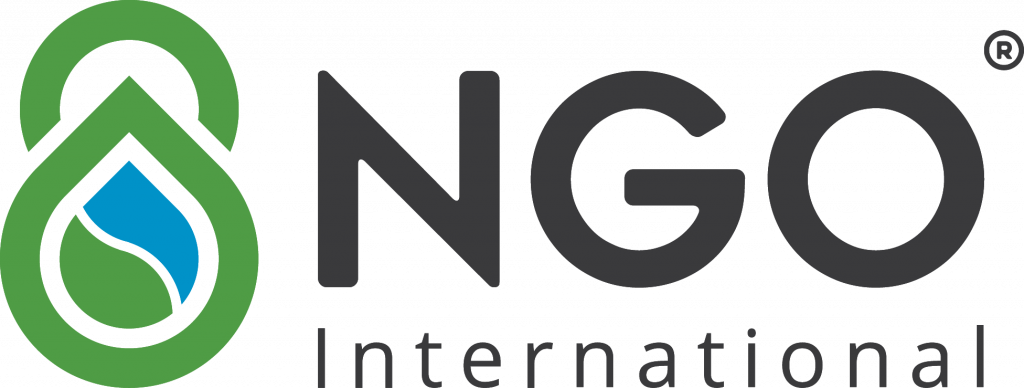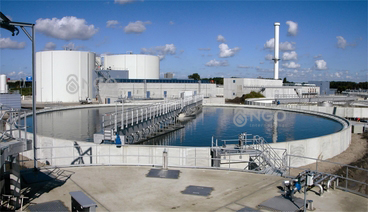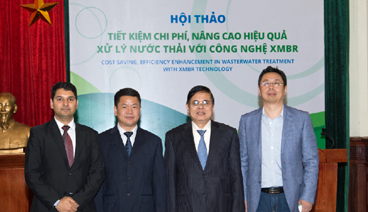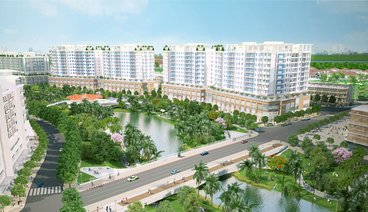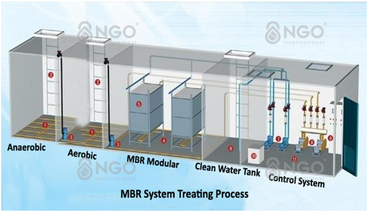NGO News – A market overview of wastewater treatment technologies in Vietnam
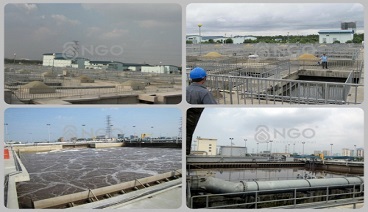
1. Municipal domestic wastewater
By the end of 2012, there were only 17 waste water treatment facilities operating in urban areas of Vietnam nationwide. The first wastewater treatment plant was operational in 2005. Currently the most popular wastewater treatment technology in Vietnam is activated sludge process with different forms, such as: conventional activated sludge (CAS), anaerobic – anoxic – aerobic (A2O), the oxidation ditch (OD) and bio batch processing (SBR). Technology of activated sludge treatment is commonly applied in the JICA-funded factories such as Kim Lien and Truc Bach, North Thang Long (Hanoi) and Binh Hung (Ho Chi Minh City).
According to Hanoi Department of Construction (2015)
Currently, Hanoi drainage system is the common system for both rainwater and sewage wastewater. Wastewater includes domestic, industrial and hospital types. Due to the investment in the collection system and sewage water plant is underway, so far, only some stations and treatment plants in Hanoi are operating such as: wastewater treatment plant in North Thang Long – Van Tri, Kim Lien, Truc Bach, Bay Mau, Ho Tay, Yen So… Therefore, only a small fraction of wastewater is treated (23,2%) and the rest are almost untreated and discharged directly into the combined sewer system of city. Untreated wastewater causes severe polluted canals and lakes.
10 out of the 17 municipal wastewater treatment plants have applied different forms of activated sludge treatment. The remaining 7 plants have applied technologies simplier, as the system tarpaulin covered anaerobic lagoon (Danang), circadian reservoirs (Buon Ma Thuot), an aeration tank/ lake complete (Binh Hung Hoa – Ho Chi Minh City) and clarifier/ trickling filter (Dalat). In general, when operating simple technologies, costs of energy, chemicals, training and equipment replacement are lower than the systems using activated sludge above. (According to the report of the World Bank Vietnam 12/2013).
Mr Dang Minh Dung – Deputy Director of Danang Drainage and Wastewater Treatment Company
Da Nang has four wastewater treatment plants using simple anaerobic lagoon technology in Phu Loc, Hoa Cuong, Son Tra and Ngu Hanh Son. This technology is the most cos-effective treatment without using electricity and can separate pollutants effectively. However, after a period in operation, since late 2009, it has some problems: treated water generated odor affecting the surrounding environment; accumulation of silt was not controlled, increased quickly and lead to the reduction of the lagoon, resulting in declining organic treatment performance.
Treatment capacity process of some wastewater treatment plant in Vietnam
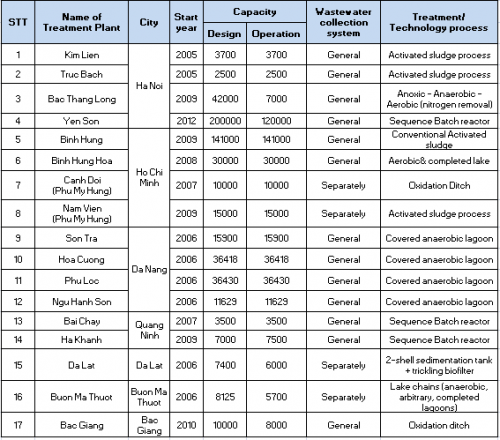
Technology applied at 17 wastewater treatment plants are very diverse, ranging from canvas-covered anaerobic lagoon system in Da Nang to more advanced activated sludge plant as in Binh Hung (HCM) and Yen So (Ha Noi). The main cause leading to the difference of technologies applied is not because of input / output wastewater parameters, but due to factors such as location and human resources for operation & maintenance.
2. Medical Wastewater
Hospitals such as 108 Army Hospital, Bach Mai hospital, Hai Ba Trung hospital, Hanoi hospital (new construction), Vietnam-Czech hospital, Children’s Hospital in Hai Phong city, Hue General hospital, Sweden – Hanoi Children’s hospital, Uong Bi hospital, Ho Chi Minh Children’s hospital… have wastewater treatment plant applied aerobic biological treatment technology using activated sludge or combined treatment using chemical methods. VietNam Academy of Science And Technology has built and operated biological and chemical wastewater treatment plant. At present, 100-150 of 1100 hospitals (or about 10-15% hospitals) have wastewater treatment plants putting into operation.
The wastewater treatment technology in hospitals currently being applied as follows:
(I) Group 1: The wastewater is pre-treated and sterilized: Wastewater WCs -> septic tank -> disinfection
(II) Group 2: The wastewater is treated according to the scheme: water at underground sewer network -> pump station -> sand sedimentation tank -> two-shell clarifier -> biological filtered tank -> 2nd standing clarifier -> disinfection -> discharge outside
(III) Group 3: Water discharge from septic tank -> underground sewer network -> Reservoirs + trash filter -> Pump station -> Aeroten tank -> 2nd deposition -> disinfection -> discharged outside.
(IV) Group 4: The wastewater treatment plant financed by foreign countries as Sweden – Hanoi children’s hospital, Uong Bi hospital. This is the waste water treatment station with advanced technology, completed from handling, wastewater disinfection, sterilization and coagulation, drying the sludge
(V) Group 5: Water discharge from septic tank -> underground sewer network -> Reservoirs + trash filter -> Pump station -> balancing tank: combines aeration and preliminary transient paddings -> treatment equipment anaerobic-anoxic-aerobic (Biofilm + activated sludge + biological product BIOWC96 + DW97 according to each module with flocculation and sedimentation) -> antiseptic -> discharged outside.
3. Industrial Wastewater
According to statistic of the Vietnam Environment Administration, as of October 2014, Vietnam has 209 operating industrial parks with a total area of 47 300 hectares. In particular, 80% industrial zones operating in Vietnam already have centralized wastewater treatment system, 20% of the remaining industrial parks don’t have or are being invested the centralized wastewater treatment system, including the industrial parks filled 70-100% water treatment capacity.
Regarding wastewater treatment measures in industrial and export processing zones, there are following technological groups:
(1) Traditional technology with biological treatment using activated sludge and trickling filters.
(2) Waste water treatment technology with biological treatment process by aerobic microorganisms, with the other treatment facilities in the processor.
(3) Wastewater treatment technology with biological treatment process using activated sludge prolonged airation
The technologies of centralized wastewater treatment plants in industrial parks were applied as follows:
– Line 1: Pre-treatment (trash, sand and grease separation) -> Balancing tank -> Mixing tank & PH adjustment tank, flocculation -> sedimentation tank -> biological treatment tank with activated sludge -> secondary sedimentation tank -> chlorination.
– Line 2: Pre-treatment (trash, sand and grease separation) -> Balancing tank (with/without aeration) -> Mixing tank & PH adjustment tank, flocculation -> sedimentation tank -> balancing tank before SBR tank -> biological treatment tank with activated sludge according to SBR -> chlorination.
– Line 3: Pre-treatment (trash, sand and grease separation) -> Balancing tank (with/without aeration) -> Mixing tank & PH adjustment tank, nutrients -> UASB anaerobic tank -> Aeroten tank with fix bio support -> secondary sedimentation tank -> Mixing tank & PH adjustment tank, flocculation -> physicochemical sedimentation tank -> chlorination.
Most of the centralized effluent treatment plant (CETP) in industrial parks have circadian Reservoirs before disinfection/antiseptic step to additionally treat wastewater before being discharged to receiving sources or recycled.
According to the Department of Infrastructure Construction (2015):
Currently, the majority of wastewater treatment plants in urban Vietnam are using biological methods with some kinds of technologies: activated sludge, biological purification, biological lake, mechanical treatment. However, there are many shortcomings in operating process.
Currently, all over the country, all kinds of untreated wastewater is upto 1.5 billion m3, in which wastewater in urban areas and industrial zones is about 1 billion m3. Only about 30% dustrial production facilities have wastewater treatment plants, but most of them are operated under standard or not regularly.
The technological equipments to handling environmental pollution are not synchronous, therefore the treatment is not effective, as well as environmental industry has not formed.
4. Waste water treatment plant at the sanitary landfills
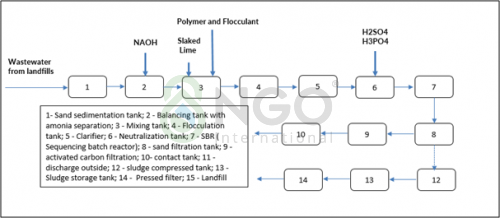
5. The low cost wastewater treatment method:
– Biological Lakes:
+ Anaerobic lake,
+ Arbitrary lake,
+ Aerobic lake (thoroughly treated reservoir)
– Centralized treatment:
+ Wastewater stabilization biological pond
+ Submerged filtered field
+ Interrupted sand filtration
+ Evaporation treatment system by plant
+ Anaerobic wastewater treatment method
+ Wastewater stable treatment by plant
+ Sand filtration
– Wastewater treatment on site
+ Septic tank
+ Septic tank with aerobic filter compartment
+ Septic tank has many baffles with anaerobic filter compartment (BASTAF)
+ Infiltration well
+ Underground filtered field
+ Biogas tank
– Wastewater treatment in artificial condition

***Vui lòng đọc kỹ yêu cầu về Điều khoản sử dụng – Bản quyền trước khi sao chép hoặc trích dẫn nội dung và hình ảnh của website.
Trang web này thuộc bản quyền của Công ty TNHH Quốc tế NGO (NGO International). Bất kỳ hình thức sử dụng hoặc sao chép một phần hoặc toàn bộ nội dung dưới mọi hình thức đều bị nghiêm cấm, trừ trường hợp được sự cho phép rõ ràng bằng văn bản từ Chúng tôi.
Nguồn: NGO

 Tiếng Việt
Tiếng Việt